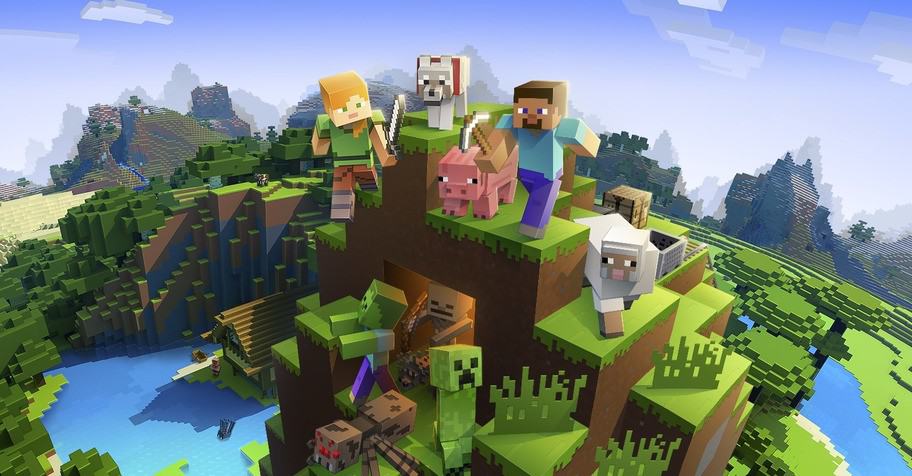Minecraft: The Complete Guide to Converting Vanilla World to Spigot
Have you spent years building up an epic Minecraft world in vanilla survival mode? Maybe you’ve constructed kingdoms and castles, automated farms and redstone circuits, or just have a world packed with memories you want to keep enjoying. The bad news is, as your world gets bigger, the lag gets worse in vanilla Minecraft. The good news is, you can convert your world to Spigot to boost performance and keep enjoying your creation. In this guide, I’ll walk you through exactly how to convert your vanilla Minecraft world into a Spigot server world, step by step. By the end, you’ll have your world running on Spigot with all your builds, inventories and progress intact. So don’t despair - your epic world can live on! Read on to learn how.
Why Convert Your Vanilla World to Spigot?
Converting your vanilla Minecraft world to Spigot is a game changer. Spigot allows way more players on a server with less lag. It gives every server owner more control and better performance. Here’s why you should make the switch:
Performance Boost
Spigot makes subtle changes under the hood that provide a serious performance increase over vanilla Minecraft. Things like optimized mob AI, improved chunk loading, and reduced block updates mean less strain on your server hardware and less lag for players. With Spigot, you can easily have 10, 20 or even 50+ players on a server with no major issues.
More Control
Spigot gives server owners far more customization options and control. You can easily install plugins to add features like grief prevention, economy, teleports, and minigames. Tweak settings for mob spawning, XP drops, and hundreds of other options using the Spigot YAML config files. Take complete control of your server and build the experience you want.
Seamless Transition
Converting your world from vanilla to Spigot is a painless process. Simply stop your vanilla server, install Spigot, and restart the server. Your world data, inventories, and builds will all remain intact. Players won’t even notice the difference, except for the improved performance and new features. It’s a seamless transition to a better server software.
If lag, lack of control, and limited players have you frustrated with vanilla Minecraft, make the switch to Spigot. Your players will thank you, and you’ll wonder why you didn’t do it sooner. Take your server to the next level and convert your vanilla world today!
Backing Up Your Vanilla World Safely
Before converting your vanilla world to Spigot, it’s critical to back up your world data in case anything goes wrong during the conversion process.
Backing Up Your World Save Files
Your Minecraft vanilla world is saved within the .minecraft folder. To back up, simply locate the “saves” folder within .minecraft and copy the folder containing your world name. Compress this copy into a .zip file and move it to a separate location like your desktop or documents folder.
- This ensures you have the latest version of your world preserved in case of any issues. Better safe than sorry!
Backing Up Your Player Data
Your player data, including inventories, spawn points and achievements are saved separately from your world data. To back this up:
- Locate the “playerdata” folder within your world save folder.
- Copy the .dat files within this folder that correspond to each player on your server.
- Compress these files into a .zip archive and save in the same location as your world backup.
- Be sure to also back up the “level.dat” file in the main save folder which contains world info like seed, spawn, etc.
By following these steps and backing up your world thoroughly before converting to Spigot, you'll ensure a smooth transition and have peace of mind that your world data is safe. With backups in hand, you're ready to proceed to installing Spigot and converting your vanilla world. Happy crafting!
Installing Spigot and Generating a New World
To get your Minecraft world running on Spigot, you’ll first need to install Spigot and generate a new world.
Downloading Spigot
The initial step is downloading the Spigot .jar file. Head to spigotmc.org and download the latest build for your Minecraft version. For example, download Spigot 1.16.5 for Minecraft 1.16.5. Save the .jar file to your server folder.
Installing Spigot and Running the Server
With the .jar file downloaded, you're ready to install Spigot. In your server folder, create a batch file called start.bat and add this line:
java -Xmx2G -Xms2G -jar spigot-1.16.5.jar nogui
Double click start.bat to run the server. Spigot will generate configuration files. Stop the server for now.
Creating a New World
Next, you'll generate a new world. Edit server.properties and set level-name=world and level-type=DEFAULT. Save the file.
Restart your server by double clicking start.bat again. Spigot will now generate a new default world named world. You can access this world by joining your server as a player.
To customize the world, stop the server and edit server.properties. You can:
- Change
level-nameto your preferred world name - Set
level-seedto a specific seed for the same world each time - Choose a world type like
FLAT,AMPLIFIEDorLARGEBIOMES
Save your changes and restart the server. Your new customized world will now generate! Join and explore your Spigot-powered world.
With Spigot installed and a new world generated, you have the foundation to build a fun multiplayer server experience. You can add plugins, optimize settings, and make this world uniquely your own. Happy crafting!
Transferring Your Builds to the Spigot World
Once you have your Spigot server set up and a fresh world generated, it’s time to move your builds and structures over from your vanilla world. There are a couple ways to go about this.
Using Structure Blocks
If you have builds in your vanilla world that you want to transfer as-is to your Spigot world, structure blocks are a great option. In your vanilla world, surround the build you want to move with structure blocks. Name the structure, then save it.
In your Spigot world, place new structure blocks in the area you want to move the build to. Load the structure from the saved file, and your build will appear! This works for moving whole builds, pixel for pixel.
Using WorldEdit
If you just want to copy and paste sections of builds or landscapes, install WorldEdit. Select the area you want to copy in your vanilla world using the selection wand, then copy it with //copy.
Head to your Spigot world and //paste to paste the selection in. You may need to rotate or flip the pasted area to orient it properly. WorldEdit is a very useful tool for quickly moving chunks of your world into a new one.
Exporting with NBTExplorer
For moving your whole vanilla world into a Spigot one, you can use an NBT editor like NBTExplorer. Zip up your vanilla world folder, then open the world.dat file in the zip archive with NBTExplorer. Export the level.dat file.
Unzip your Spigot world and replace the level.dat file in it with the exported one from your vanilla world. Then delete the DIM1 folder from the Spigot world, which contains the Nether. Your vanilla world structures and terrain will now appear in the Spigot overworld! You may need to do some cleaning up around the edges where new chunks have generated.
Moving to a Spigot sever allows you access to many mods and plugins to enhance your multiplayer experience. With a few tricks, you can bring your treasured builds along for the ride. Happy crafting!
Optimizing Your Spigot Server for Best Performance
Once you've converted your world to Spigot, it's time to optimize your server for the best performance. Spigot servers provide more customization options than Vanilla, allowing you to fine-tune settings to suit your needs.
Optimize spigot.yml
The spigot.yml file controls many of your server's settings. Reducing view-distance, mob-spawn-range, and max-tick-time can improve TPS and reduce lag. Increasing max-player-move-distance allows players to move faster, but may impact TPS. Adjust based on your server specs and number of players.
Use Performance Enhancing Plugins
Plugins like ClearLagg, Lithium, and Phosphor can help optimize your Spigot server. ClearLagg removes dropped items and mob AI tasks to reduce lag. Lithium and Phosphor optimize Spigot's code to improve performance. Install them and configure settings to suit your needs.
Consider Paper or Purpur
For larger servers, switching to Paper or Purpur—optimized server software based on Spigot—may significantly boost performance. They provide more advanced optimization settings and improved chunk loading and mob AI. Purpur is a fork of Paper aimed at technical players, with options like increased piston push limit and end portal manipulation.
Reduce Render Distance
A lower render distance means less chunks are loaded, improving TPS. Most players are fine with 8-12 chunk render distance. You can set a maximum in spigot.yml and allow donors or staff a higher limit.
Pre-generate Terrain
Use WorldBorder or Chunky to pre-generate terrain. This loads chunks before players explore them, preventing lag spikes when new areas are discovered. You can pre-generate the entire map or just areas around spawn and popular locations.
Optimizing your Spigot server and utilizing performance-enhancing plugins will allow you to support more players with less lag. Monitor your TPS and make adjustments as needed to keep your server running as efficiently as possible.
Conclusion
So there you have it, the complete process for converting your vanilla Minecraft world to Spigot. It may seem complicated, but if you follow the steps carefully, you'll be playing on your own Spigot server with your original world in no time. Once converted, your world will run so much more smoothly and open up a ton of possibilities with Spigot plugins. No more lag, griefing, or other issues that often come with vanilla servers. Get out there, convert that world, and start enjoying a whole new Minecraft experience with your friends! The effort will be well worth it.
Now grab you friends, and rent your first, Dedicated Minecraft server.




